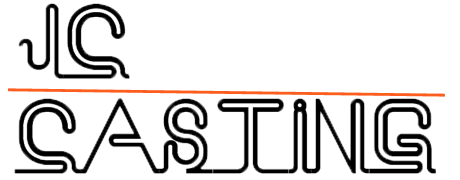1. What is Tooling?
Investment casting tooling, also called wax pattern tooling, is necessary for all investment castings. The tooling is what creates the mold in the sand that will eventually give the part its shape. The tooling is made from high grade aluminum alloys, and designed to allow the flow of molten wax under extreme pressure, in order to allow it to solidify into the wax pattern which is used to form the ceramic mold during the investing process. When creating tooling out of aluminum, it is common to see tooling on both sides of the aluminum, one side is the cope and the other is the drag. This double sided tooling is known as a matchplate and is used in automated machines to produce thousands of molds a day. Aluminum is the material of choice for matchplates because it is fairly easy to machine while providing the necessary durability to withstand repeated use.
Unlike sand casting, investment casting tooling replicates the final casting in reverse, due to the fact that we cut “cavities” in which the wax flows to form our patterns. This tooling is often designed to be “collapsible”, in other words, it must be able to be taken apart to remove the solid wax patterns when they have cooled.
Another critical element of the tooling design is that the tooling must be constructed so that the wax patterns produced are larger than the final casting dimensions. This is due to the fact that metal shrinks during its solidification, so our engineers must calculate an expected shrinkage rate for every dimension in the tool, and apply those expected shrinkage rates when cutting the tooling. In the pattern tooling, any internal features can be produced, however if the various metal components of the tooling cannot be removed from the wax after solidification has taken place, a suitable method of coring will need to be utilized to form internal features. Finally, the tooling can consist of simple single cavity varieties, or complex multi-cavity tools with automatic ejectors for higher volume jobs.
Creating foundry toolings is more of an art than it is a skill, it takes years of experience to learn the tricks of the trade. In recent years the introduction of new tooling material and different techniques to produce the tooling has changed the art of pattern making. JC Casting has a wide range of wax presses to accommodate most every tool design and size, as well as for all ranges of jobs from small volumes to large.
2. What are the Benefits of In-house Tooling?
Tooling is arguably the most important part of the entire investment casting process. Not only does the tool need to be perfect to ensure all design specifications are met, but it’s also one of the most expensive, time-consuming fixes if something isn’t right—especially if you’re working with a third-party toolmaker. Working with an outside toolmaker for projects requires a lot of back and forth communication, leaving room for misinterpretations and sometimes delayed responses.
3. How Does JC Improve Your Projects with In-house Tooling Capabilities?
Over the past 20 years JC Casting has manufactured and provided customized parts for a variety of industrial and commercial uses from one-off prototypes through to high production volumes. We have seen first-hand the many benefits that come from having an in-house toolroom and experienced toolmakers on hand. We have professional equipment including ? With an extensive range of capabilities on site, we can guarantee our customers top-class, custom tooling from a skilled and dedicated team.
At JC Casting, our experienced in-house toolmakers work side-by-side with our engineers and inspectors to make sure everything is built exactly to specification, and often times our team meets right on the tool room floor to work things out in-person. This eliminates the need for costly rework to the tool, as a single iteration can cost between $1,000 to $10,000 and take anywhere from 3 to 5 weeks to complete.
